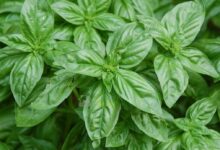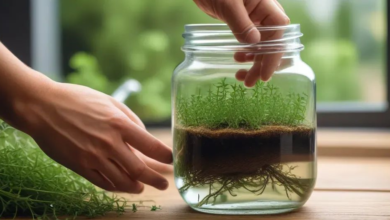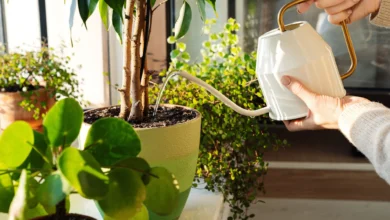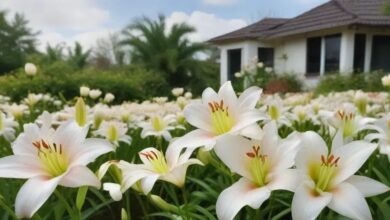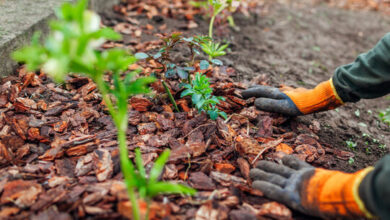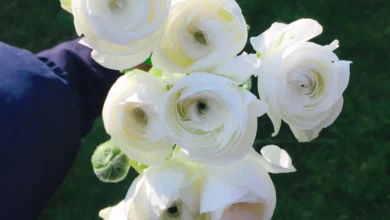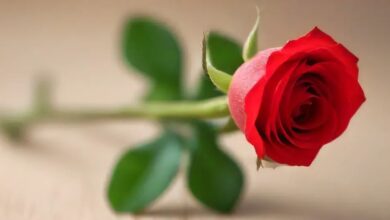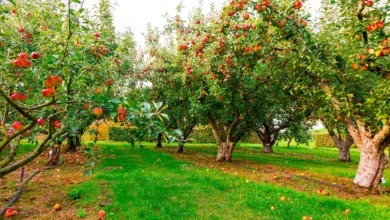Top 10 Plants for Container Gardening
Discover the best plants for container gardening success. Expert tips on growing vegetables, herbs, and flowers in pots with our top 10 plant picks.
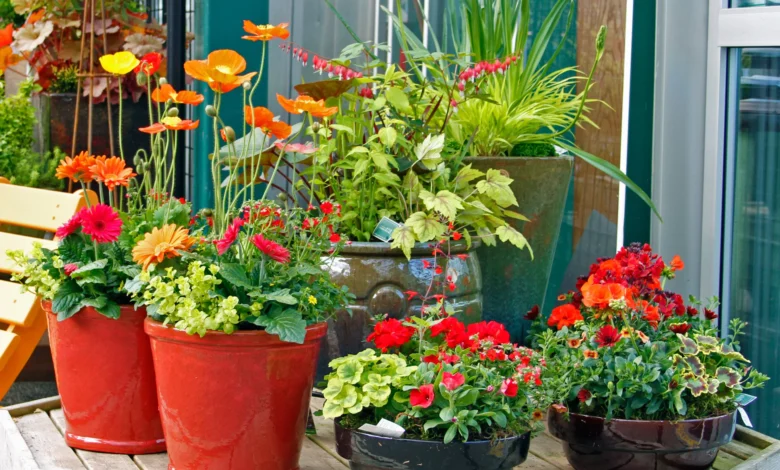
Plants for Container Gardening has revolutionized the way we approach cultivating plants, making it possible for anyone to create lush, productive gardens regardless of space limitations or soil conditions. Whether you’re living in a small apartment with just a balcony, dealing with poor soil quality, or simply want the flexibility to move your garden around, container gardening offers an accessible and rewarding solution for plant enthusiasts of all skill levels.
The art of growing plants in containers has gained tremendous popularity in recent years, and for good reason. This versatile gardening method allows urban dwellers to transform cramped spaces into green oases, enables renters to garden without permanent landscaping commitments, and provides gardeners with unprecedented control over growing conditions. From bustling city balconies to suburban patios, container gardens are sprouting up everywhere as people discover the joy and practicality of portable horticulture.
Plants for Container Gardening success largely depends on selecting the right plants for your specific containers and growing conditions. Not all plants adapt well to the confined root space and unique drainage requirements of pot cultivation. The plants featured in our comprehensive guide have been carefully selected based on their proven ability to thrive in containers, their adaptability to various growing conditions, and their practical benefits for home gardeners.
Throughout this detailed exploration, we’ll examine the top 10 plants for container gardening, providing you with essential information about growing requirements, care tips, and the specific advantages each plant offers. Whether you’re interested in growing fresh herbs for your kitchen, colorful flowers to brighten your space, or nutritious vegetables for your table, this guide will equip you with the knowledge needed to create a flourishing container garden.
Container Gardening Fundamentals
Before diving into our top plant selections, it’s crucial to understand what makes container gardening unique and successful. Unlike traditional ground gardening, plants grown in containers rely entirely on you for their water, nutrients, and growing medium. This complete dependency means that while you have greater control over growing conditions, you also bear full responsibility for meeting your plants’ needs.
Container gardens offer several distinct advantages over traditional gardening methods. Mobility stands as perhaps the most significant benefit – you can easily relocate containers to optimize sun exposure, protect plants from harsh weather, or simply rearrange your garden design. This flexibility proves especially valuable for renters or those who may need to move their gardens seasonally.
The controlled environment of container gardening also allows for better soil management, improved drainage control, and reduced issues with pests and diseases. You can customize the soil mix for each plant’s specific needs, ensure proper drainage to prevent root rot, and more easily monitor and address any problems that arise.
However, Plants for Container gardening also face unique challenges. Limited root space restricts plant size and may require more frequent watering and fertilizing. Container soil dries out faster than ground soil, especially in hot weather or windy conditions. Additionally, containers provide less insulation than the earth, making roots more susceptible to temperature extremes.
Top 10 Plants for Container Gardening Success
1. Tomatoes – The Container Garden Superstar
Tomatoes reign supreme among container vegetables, offering exceptional productivity and flavor when grown in appropriately sized containers. These warm-season favorites adapt remarkably well to pot cultivation, providing gardeners with fresh, homegrown tomatoes throughout the growing season.
For successful tomato container gardening, choose containers at least 20 gallons in size for indeterminate varieties or 10-15 gallons for determinate types. The extensive root system of tomatoes requires ample space to develop correctly, and larger containers retain moisture better, reducing the frequency of watering needed.
Cherry tomatoes and compact determinate varieties perform exceptionally well in containers, producing abundant harvests in relatively small spaces. Popular container-friendly varieties include ‘Patio’, ‘Tiny Tim’, ‘Sweet 100’, and ‘Roma’. These varieties have been specifically bred or selected for their compact growth habits and high productivity in confined spaces.
Container tomato care requires consistent watering, regular fertilization, and adequate support structures. Install tomato cages or stakes at planting time to provide necessary support as plants grow. Water deeply but avoid overwatering, which can lead to root problems and diluted fruit flavor.
The key to thriving tomato plants in containers lies in maintaining consistent soil moisture, providing 6-8 hours of direct sunlight daily, and feeding regularly with a balanced fertilizer designed for fruiting plants. Mulching the soil surface helps retain moisture and regulate soil temperature.
2. Herbs – Culinary Convenience in Containers
Herbs represent perhaps the most practical and rewarding plants for Container Gardening, providing fresh flavors for cooking while requiring minimal space and care. Most culinary herbs naturally adapt well to container cultivation, often preferring the improved drainage that containers provide over heavy garden soils.
Basil stands out as an exceptional container herb, thriving in warm conditions and producing aromatic leaves throughout the growing season. This tender annual requires consistent warmth and moisture, making containers ideal for controlling growing conditions. Pinch flowers regularly to encourage continued leaf production, and harvest leaves frequently to promote bushy growth.
Mediterranean herbs like rosemary, thyme, oregano, and sage excel in Plants for Container Gardening, often preferring the well-draining conditions containers provide. These perennial herbs tolerate drought conditions once established and can overwinter in containers in many climates. Their compact growth habits make them perfect for small containers or herb garden collections.
Cilantro and parsley represent excellent choices for cool-season herb container gardening. These herbs prefer cooler temperatures and can bolt in hot weather, making containers advantageous for relocating them to shadier areas during the summer heat. Succession planting, done every 2-3 weeks, ensures a continuous harvest.
The beauty of herb gardening in containers lies in the convenience of having fresh ingredients just steps from your kitchen. Group herbs with similar water and light requirements together, and consider creating themed collections like “pizza herbs” or “tea herbs” for both practical and aesthetic appeal.
3. Lettuce and Leafy Greens – Quick-Growing Container Crops
Lettuce and other leafy greens provide some of the most rewarding quick results in container vegetable gardening. These fast-growing crops adapt exceptionally well to containers, often producing better quality leaves than when grown in garden beds due to improved soil conditions and easier pest management.
Container lettuce thrives in relatively small containers, requiring only 6-8 inches of soil depth for most varieties. This shallow root requirement makes lettuce ideal for window boxes, shallow planters, and tiered container systems. The compact root system also allows for intensive planting, maximizing harvest from limited space.
Leafy greens like spinach, arugula, kale, and Swiss chard offer excellent nutritional value and adapt well to container growing. These crops tolerate partial shade, making them suitable for balconies or patios that don’t receive full sun all day. Many leafy greens also tolerate cool weather, extending the growing season in many climates.
The “cut-and-come-again” harvesting method works exceptionally well with container-grown leafy greens. Rather than harvesting entire plants, cut outer leaves as needed while allowing the center to continue growing. This method provides continuous harvests over extended periods and maximizes productivity from limited container space.
Cool-season greens in containers can be grown year-round in many climates by moving containers to protected locations during extreme weather. This mobility allows gardeners to optimize growing conditions and extend harvest periods significantly beyond what’s possible with ground-planted crops.
4. Peppers – Colorful and Productive Container Plants
Peppers rank among the most productive and visually appealing container vegetables, offering vibrant colors, diverse flavors, and compact growth habits that suit container cultivation perfectly. Both sweet and hot pepper varieties adapt well to container growing, often producing higher yields per square foot than ground-planted specimens.
Sweet peppers like bell peppers, banana peppers, and Italian frying peppers thrive in containers of 5-10 gallons, depending on the variety size. These warm-season crops require consistent warmth and moisture, conditions that can be easily maintained in containers with proper care. The compact root system of most pepper varieties makes them ideal for container cultivation.
Hot peppers often perform even better than sweet varieties in containers, with many compact varieties developed explicitly for pot cultivation. Ornamental hot peppers serve dual purposes, providing both culinary ingredients and attractive decorative elements for patios and balconies. Varieties like ‘Thai Hot’, ‘Habanero’, and ‘Jalapeño’ produce abundant harvests in relatively small containers.
Container pepper care requires consistent watering without waterlogging, regular fertilization during the growing season, and protection from strong winds that can damage heavily loaded plants. Staking or caging may be necessary for larger varieties or those producing heavy fruit loads.
The extended harvest period of pepper plants makes them particularly valuable for container gardens. Most varieties continue producing until frost, and in warm climates, pepper plants can be overwintered and produce for multiple seasons when grown in containers.
5. Marigolds – Vibrant Flowers for Easy Container Color
Marigolds represent one of the most foolproof and rewarding flowering plants for Plants for Container Gardening, offering brilliant colors, easy care, and natural pest-deterrent properties. These hardy annuals bloom continuously from spring until frost, providing constant color and requiring minimal maintenance once established.
French marigolds and African marigolds both excel in containers, with French varieties typically offering more compact growth habits better suited to smaller containers. These cheerful flowers tolerate heat, drought, and poor soil conditions, making them ideal for beginning container gardeners or challenging growing locations.
The pest-repelling properties of marigolds make them excellent companion plants in vegetable container gardens. Many gardeners plant marigolds alongside tomatoes, peppers, and other vegetables to help deter harmful insects naturally. This companion planting maximizes the utility of limited container space while creating attractive mixed plantings.
Container marigold care requires well-draining soil, regular deadheading to promote continued blooming, and occasional fertilization during the growing season. These low-maintenance flowers tolerate some drought but perform best with consistent moisture and regular feeding.
The long blooming period and reliable performance of marigolds make them invaluable for maintaining color in Plants for Container Gardening throughout the growing season. Their ability to self-seed means they often return in subsequent years, though treating them as annuals ensures the best flowering performance.
6. Strawberries – Sweet Rewards from Small Containers
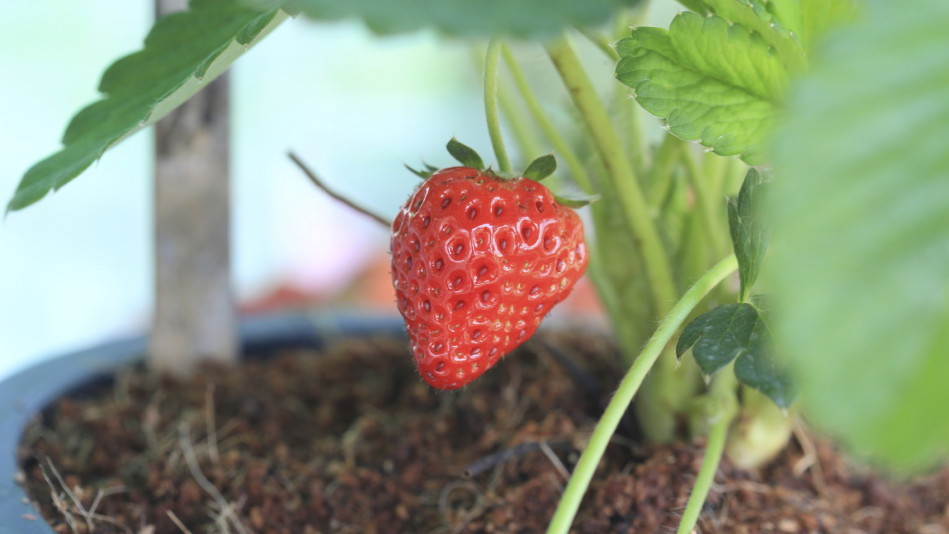
Strawberries offer unique rewards in container gardening, providing sweet, fresh fruit from relatively compact plants that adapt exceptionally well to pot cultivation. Container strawberries often produce cleaner fruit than ground-planted specimens, as the berries remain elevated above the soil and potential pests.
Everbearing strawberry varieties work particularly well in containers, producing multiple crops throughout the growing season rather than one large spring harvest. Varieties like ‘Seascape’, ‘Albion’, and ‘Tribute’ provide continuous fruiting from spring through fall in suitable climates.
Hanging basket strawberries maximize vertical growing space while creating attractive displays. Trailing varieties work particularly well in hanging containers, allowing runners to cascade over the edges while producing fruit at multiple levels. This growing method also improves air circulation around plants, reducing disease issues.
Container strawberry care requires consistent moisture, regular fertilization during the growing season, and protection from birds and other fruit-eating pests. Raised containers make protective netting easier to install and manage compared to ground-level plantings.
The perennial nature of strawberry plants makes them long-term investments in container gardens. With proper winter protection, containerized strawberry plants can produce for several years, though productivity typically peaks in the second and third years.
7. Succulents – Low-Maintenance Container Champions
Succulents represent the ultimate low-maintenance option for container gardening, offering stunning visual appeal with minimal water and care requirements. These drought-tolerant plants store water in their leaves, stems, or roots, making them perfect for busy gardeners or those in water-restricted areas.
Echeveria, Sedum, and Jade plants rank among the most popular container succulents, offering diverse forms, colors, and textures. Many succulents develop enhanced colors when grown in bright light conditions, creating living art pieces that change throughout the seasons.
Succulent container gardens require excellent drainage above all else. Use containers with drainage holes and well-draining potting mix specifically formulated for cacti and succulents. Overwatering represents the most common cause of failure with container succulents.
The architectural qualities of succulents make them excellent for modern container designs and minimalist garden aesthetics. Many varieties maintain their form and color year-round, providing constant visual interest with minimal seasonal variation.
Container succulent arrangements can incorporate multiple species with similar care requirements, creating diverse textural and color combinations that enhance the overall aesthetic. These low-water gardens work exceptionally well in hot, sunny locations where other plants might struggle.
8. Petunias – Cascading Color for Container Displays
Petunias excel as container flowers, offering profuse blooms in a wide range of colors and forms. These versatile annuals bloom continuously from spring until frost, creating spectacular displays in containers, hanging baskets, and window boxes.
Wave petunias and other trailing varieties work particularly well in containers, spreading to fill large planters or cascading dramatically from hanging baskets. These vigorous growers can quickly cover large areas, providing maximum color impact from a single container.
Grandiflora and multiflora petunias offer different advantages for container gardening. Grandiflora varieties produce larger individual flowers but fewer overall blooms, while multiflora types create masses of smaller flowers that recover quickly from weather damage.
Container petunia care requires regular watering, as these plants are heavy feeders and drinkers during peak growing season. Regular deadheading promotes continued blooming, though newer varieties often self-clean, dropping spent flowers naturally.
The heat tolerance and continuous blooming habit of petunias make them invaluable for summer container gardens. Their ability to thrive in full sun conditions makes them perfect for bright patios, decks, and balconies where other flowers might struggle.
9. Mint – Aromatic and Contained Control
Mint represents a perfect candidate for container gardening, as containers provide essential control over this vigorous spreader while maintaining easy access to fresh leaves for culinary and aromatic uses. Growing mint in containers prevents it from overwhelming other plants while ensuring a steady supply of fragrant leaves.
Spearmint, peppermint, and flavored varieties like chocolate mint and apple mint all thrive in containers. These hardy perennials prefer consistently moist soil and tolerate partial shade, making them adaptable to various container garden locations.
Container mint requires regular watering to maintain the moist soil conditions these plants prefer. Unlike many herbs that prefer drier conditions, mint thrives with consistent moisture and can even tolerate brief periods of waterlogging better than drought.
The rapid growth rate of mint plants in containers means regular harvesting actually improves plant health and appearance. Pinch flowers to encourage continued leaf production, and don’t hesitate to cut stems back dramatically – mint responds with vigorous new growth.
Mint container gardens can include multiple varieties in separate containers to prevent cross-pollination and maintain distinct flavors. This approach allows gardeners to create diverse mint collections while maintaining control over each variety’s growth.
10. Beans – Vertical Growing Container Solutions
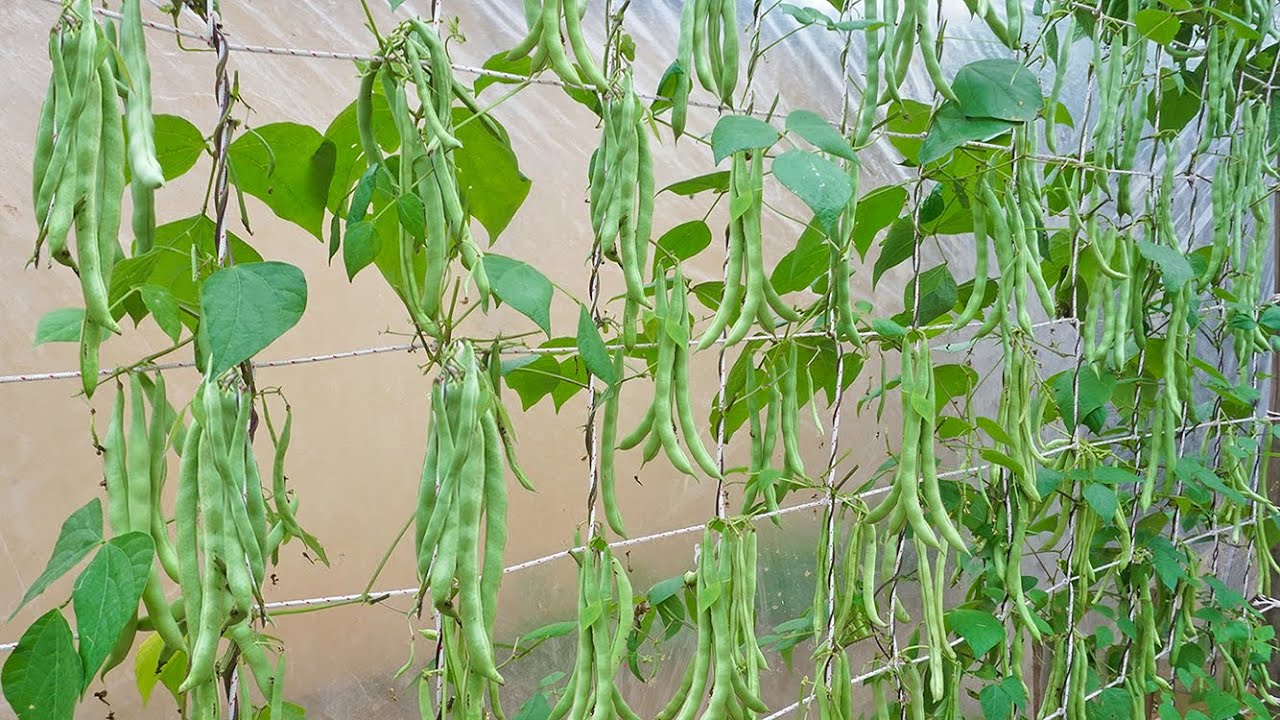
Beans offer excellent opportunities for vertical container gardening, maximizing growing space while providing nutritious harvests. Both bush beans and pole beans adapt well to container cultivation, though they require different container sizes and support systems.
Bush beans work well in medium-sized containers (5-10 gallons) and require no support structures, making them ideal for beginning container gardeners. Varieties like ‘Blue Lake Bush’, ‘Contender’, and ‘Provider’ produce concentrated harvests over 2-3 weeks.
Pole beans require larger containers (15-20 gallons) and sturdy support structures, but produce higher yields over extended periods. These climbing varieties make excellent use of vertical space, growing 6-8 feet tall and producing beans continuously throughout the growing season.
Container bean growing requires consistent moisture during flowering and pod development. Beans are nitrogen-fixing plants that improve soil fertility, making them excellent rotation crops for containers that will be replanted with heavy-feeding vegetables.
The quick growth and high productivity of bean plants make them satisfying crops for container gardens. Most varieties mature in 50-70 days from planting, providing relatively quick results for patient gardeners.
Essential Container Gardening Tips for Success
Successful container gardening depends on addressing the unique requirements of plants grown in confined spaces. Container plants rely entirely on gardeners for water, nutrients, and optimal growing conditions, making proper care techniques essential for thriving gardens.
Watering container plants requires more attention than ground-planted gardens, as containers dry out faster and plants cannot extend roots to seek moisture. Check soil moisture daily during hot weather, and water deeply when the top inch of soil feels dry. Early morning watering reduces evaporation and allows plants to absorb moisture before heat stress occurs.
Container soil selection significantly impacts plant success. Never use garden soil in containers, as it compacts and drains poorly in the confined space of pots. High-quality potting mix provides proper drainage, aeration, and moisture retention necessary for healthy root development.
Fertilizing container plants requires regular attention, as frequent watering leaches nutrients from the soil faster than in-ground plantings. Use slow-release fertilizers at planting time, supplemented with liquid fertilizers every 2-4 weeks during active growing periods.
More Read: Best Plants for Butterflies and Pollinators
Conclusion
Container gardening opens up endless possibilities for growing beautiful and productive plants regardless of space limitations or soil conditions. The top 10 plants featured in this guide represent tried-and-tested options that consistently perform well in containers while providing diverse benefits for gardeners.
From productive tomatoes and flavorful herbs to colorful flowers and nutritious leafy greens, these container-friendly plants offer something for every gardener’s interests and needs. Success with container gardening stems from selecting suitable plants, providing adequate care, and understanding the specific needs of plants grown in confined spaces.
Whether you’re starting with a single container herb garden on a windowsill or planning an elaborate container garden display, these versatile plants will provide satisfaction and success. Start small, learn from experience, and gradually expand your container gardening adventures as your confidence and knowledge grow.
The beauty of container gardening lies not just in the plants themselves, but in the flexibility, control, and accessibility it provides to gardeners of all experience levels. With proper plant selection and care techniques, your container garden can provide years of enjoyment, fresh produce, and natural beauty in even the smallest growing spaces.

